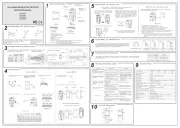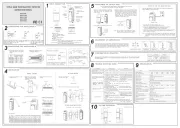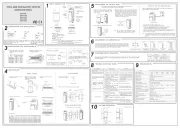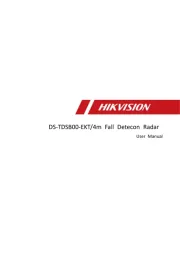Hikvision DS-PDC15-EG2 Manual
Hikvision
Bevægelsesdetektor
DS-PDC15-EG2
| Mærke: | Hikvision |
| Kategori: | Bevægelsesdetektor |
| Model: | DS-PDC15-EG2 |
| Bredde: | 65.4 mm |
| Dybde: | 45.5 mm |
| Højde: | 86.8 mm |
| Vægt: | 68 g |
| Antal pr. pakke: | 1 stk |
| Produktfarve: | Hvid |
| Opbevaringstemperatur (T-T): | -20 - 60 °C |
| Relativ luftfugtighed ved drift (H-H): | 10 - 90 % |
| Driftstemperatur (T-T): | -10 - 55 °C |
| Forbindelsesteknologi: | Trådløs |
| Placering: | Indendørs |
| LED-indikatorer: | Alarm |
| Monteringstype: | Loft/væg |
| Indgangsspænding: | 9 - 16 V |
| Sensortype: | Passiv infrarød (PIR) sensor |
| Strømforbrug: | 11 mA |
| Opdagelsesafstand: | 15 m |
| Installationshøjde (min.): | 2.4 m |
| Installationshøjde (maks.): | 3.6 m |
| Registreringsvinkel: | 6.3 ° |
Har du brug for hjælp?
Hvis du har brug for hjælp til Hikvision DS-PDC15-EG2 stil et spørgsmål nedenfor, og andre brugere vil svare dig
Bevægelsesdetektor Hikvision Manualer

28 Juli 2025

8 December 2024

8 December 2024

8 December 2024

10 September 2024

27 August 2024

10 August 2024

6 August 2024

5 August 2024

1 August 2024
Bevægelsesdetektor Manualer
Nyeste Bevægelsesdetektor Manualer

29 Oktober 2025

12 Oktober 2025

29 September 2025

28 September 2025

24 September 2025

24 September 2025

24 September 2025

23 September 2025

23 September 2025

23 September 2025
